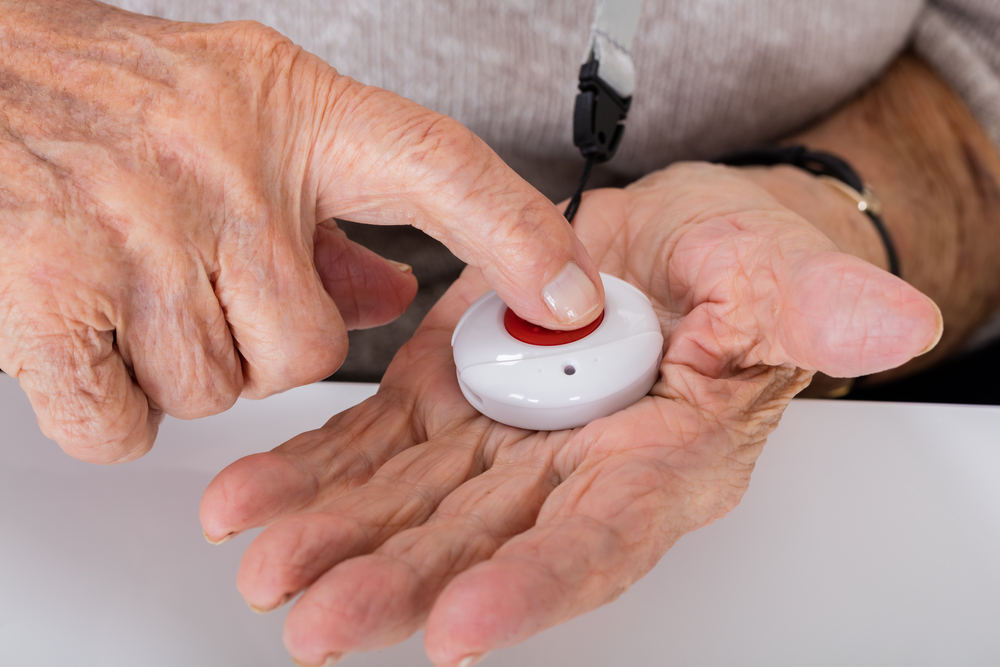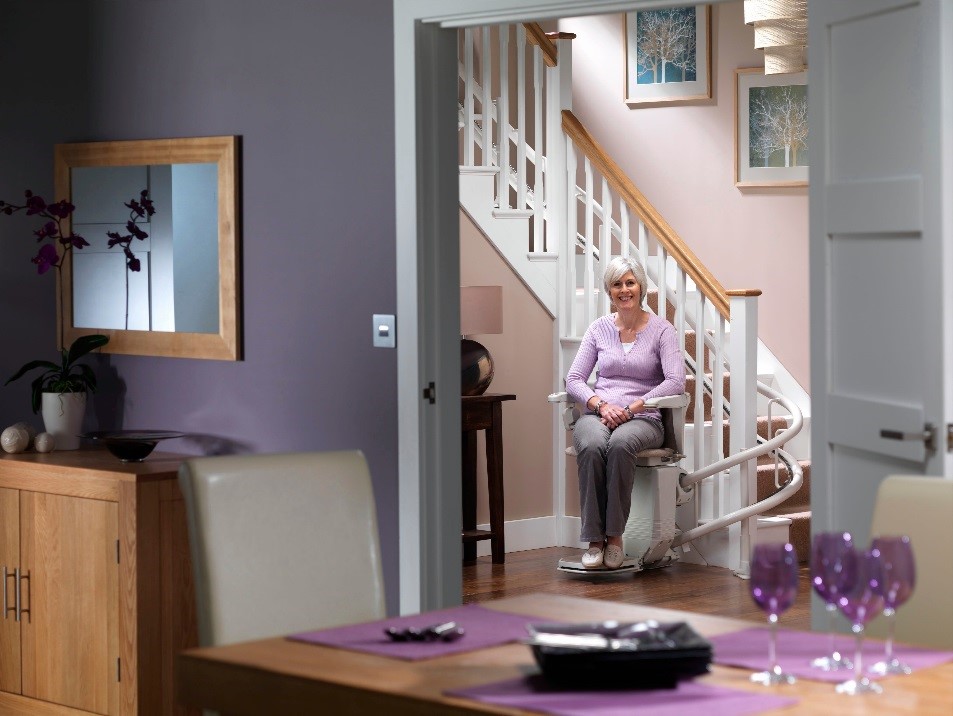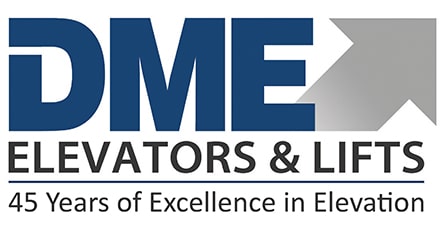
Our home should be a place where we feel safe, secure, and comfortable. Many people feel this way in their homes, making it easy to see why most want to live in their homes for years to come. But for older adults, their homes can start to feel inaccessible and dangerous. This is where an aging-in-place checklist comes in. You can assess how accessible your home is to seniors and those with limited mobility starting when you’re young and begin to make modifications to make it a safe place to live down the line.
Home safety modifications can include simple changes to prevent trips and falls or investments like stair lifts, home elevators, and wheelchair lifts to improve the peace of mind of you and your loved ones as you age.
What is Aging in Place?
Aging in place is the concept of older adults being able to remain in their own homes as they age, rather than having to move to an assisted living facility or nursing home.
Aging in place is becoming an increasingly popular and desirable option, but it does require some preparation to be successful.
Here’s a checklist on how to prepare for aging in place safely and comfortably in your home.
Key Considerations for Aging in Place
Home Modifications
One of the most important aspects of aging in place is having a home that is safe, accessible, and comfortable for seniors. For example, this might mean installing grab bars in bathrooms, ramps, or stair lifts. Other modifications that can increase safety for older adults include improving lighting and installing non-slip flooring.
Access to Healthcare
If you want to age in place, it’s essential to ensure that you have access to healthcare. This can mean having a nearby primary care provider and the ability to seek out specialists as needed.
You may also want to consider investing in medical alert systems or other devices that can keep you connected to healthcare professionals in the event of an emergency.
Social Engagement
Seniors may have fewer opportunities to socialize than they did when they were younger, so aging in place can be isolating. You may want to consider joining local community groups or cubs or participating in local events and activities to maintain adequate social interaction.
It’s also a good idea to regularly reach out to family and friends to nurture social connections.
Transportation
Transportation can be a significant obstacle for seniors who wish to age in place, especially if they are no longer able to drive. You should explore public transportation options in your area or consider hiring a caregiver or transportation service as part of your aging-in-place checklist.
Financial Planning
Seniors who want to age in place should carefully plan their financial future. This can mean working with a financial planner to develop a budget and investment plan to help you stay financially secure. You may also want to consider long-term care insurance, which can help cover the costs of home care or assisted living if needed. Incorporating financial planning into your aging-in-place checklist ensures that you can comfortably afford the necessary modifications and services.
General Home Safety Tips for Aging in Place

Home Security System
Choosing a system with a camera and speaker will help you identify who is near your home and decide whether you need to get up to answer the door.
Installing a home security system that notifies you when certain home barriers are breached, or a person is near an entryway can help you be more alert and better able to reach out for help if needed.
Medical Alert System
Medical alert systems often include wearable help buttons that you can push in the event of a fall or another emergency. They connect you to a 24/7 monitoring center, and they can help improve peace of mind even for those who are not at a high risk of falling.
Emergency Phone Tree
An emergency phone tree establishes a process for who to contact and in what order in the event of an emergency. With some medical alert systems, you can set friends and family as emergency contacts. For example, you can customize the alert to summon the operator as well as your first emergency contact when you push the button.
Lighting
Ensuring that all areas of your home are well-lit will help reduce the risk of trips and falls. First, in areas that need more lighting, consider replacing your current bulbs with LED lightbulbs. They’re brighter and need to be replaced less often. If you’re bothered by bright lights or have cataracts, you may want to install dimmer switches so you can adjust the brightness.
If you want to add lighting to areas that are not currently wired for traditional lightbulbs, you can purchase LED light strips that plug into existing outlets. They can help illuminate walkways and give extra light under cabinets in the kitchen or bathroom.
Motion-detection lights are a great option if you don’t want to worry about using remotes or switches to light up a room. Using motion-detection lights in hallways can make nighttime trips to the bathroom easier, for example. There are also light-sensor nightlights that turn on automatically when the light dims below a certain point.
Removing Trip Hazards
One of the simplest ways to prevent slips and falls is to wear non-slip footwear. You can still wear comfortable slippers, but choose a pair with a closed heel to prevent the shoe from coming off your foot and a rubberized or textured sole to create traction when walking. Hard soles improve sensation in the bottom of your feet, which provides a better sense of stability and balance and helps prevent falls. This is especially important for people with neuropathy in their feet.
To eliminate trip hazards, consider removing all rugs from high-traffic walkways or replacing them with vinyl rugs. Vinyl rugs don’t create an elevation change, and they are made of slip-resistant material that won’t bunch up under your feet or walking aids. Area rugs should be fixed to the floor to keep them from moving, and it’s a good idea to place fixed, non-skid mats on porcelain or tile floors to help minimize injuries should you have a fall.
Thresholds between flooring types and rooms should be as flat as possible to avoid trip hazards. If a threshold creates a drastic elevation change or you can’t replace it with a flat one, you can install a small threshold ramp on either side of it to make it less of a tripping hazard.
Room-By-Room Aging in Place Checklist
When preparing to age in place, you should conduct a walkthrough of your home, checking each room for safety, accessibility, and comfort. In every room, you should declutter and get rid of extra furniture to make them easier to navigate. Put things you use every day, especially major appliances, in easy-to-access locations so you don’t have to lift them overhead or bend to reach them.
Here is a checklist of things to consider as you prepare each room of your home for aging-in-place.
Entrance, Hallway & Stairs
- Use entryway lighting (motion-detecting or always-on lighting)
- Install railings around all steps
- Keep mats to a minimum to prevent trips and falls
- Keep walkways clear leading to the point of entry
- Make sure the front door and storm door are easy to open, lock, and unlock (lever handles are easier to use than doorknobs if you have limited dexterity)
- Consider widening doorways to accommodate wheelchairs or walkers
- Check for trip hazards like throw rugs and thresholds in hallways
- Consider adding handrails along hallways
- Add bright contrast tape to uneven parts of the floor to help you stay aware when walking
- Keep walkways clear of electrical cords or other lines or cables
- Add non-slip tread covers to steps
- Install handrailing up the stairs
- Use motion detection lighting to illuminate halls and stairwells
- Consider installing a stair lift
- If building a new home talk to your builder about how you can easily make it “elevator ready” for a possible future elevator installation
Living Room
- Be sure heavy furniture is safely secured to avoid tip-overs
- Consider removing or moving low-level tables or furniture to prevent tripping
- Keep a charging station next to the sitting area for easy access to devices
- Be sure area rugs are secured to the floor and the edges won’t bunch up
- Be aware of your pets to avoid tripping
Kitchen
- Make sure your appliances, smoke detectors, and carbon monoxide detectors are working properly
- Check appliances for frayed cords or malfunction
- Smoke and gas detectors should be tested at least once per month, and batteries should be replaced once a year
- If you don’t want the hassle of replacing batteries regularly, choose a smoke alarm with non-replaceable batteries that last up to 10 years and alert you with a chirp when the battery is low
- Keep the phone number for poison control accessible
- Wear appropriate clothing when cooking (short sleeves and fire-resistant material)
- Purchase cut-resistant protective gloves and rubberized cutting boards
- Consider replacing turn knobs and other handles with “D” handles so you don’t have to grip them to open drawers and cabinets
Bathroom
- Install grab bars near the toilet and in the shower or tub area
- Add gripping to the bottom of the tub or shower
- Use a shower chair or bench
- Replace low toilets with higher ones or add a raised toilet seat
- Secure non-slip bath mats or rugs to the floor
- Install durable and easy-to-use faucets (consider using a single-handle faucet
- Consider installing a walk-in tub
Bedroom
- Make sure your bed is easy to get in and out of and keep a step stool nearby for bed access
- Charge devices needed to monitor sleep and health before bed
- Keep a phone nearby in case an emergency occurs at night
- Consider purchasing an adjustable bed for increased sleeping comfort if needed
- If stairs are difficult to navigate, consider installing a stair lift or elevator in your home. Otherwise, it may be safer to move a bedroom downstairs—have your entire living area, including a bedroom and bathroom, on one main floor
Advanced Home Modifications for Aging in Place

- Stair lifts: If you have difficulty navigating your stairs, a stair lift can safely reduce the amount of time it takes to reach the next level of your home and reduce your risk of falls. Stair lifts can be installed on both straight and curved staircases, and they’re designed with the user in mind so those with limited dexterity can operate them comfortably.
- Home elevators: A home elevator is an investment that enables both wheelchair users and those with limited mobility to comfortably navigate all areas of their homes. Multi-story homes can be designed as “elevator ready”, which provides a pre-framed elevator shaft with stacked closets.
- Wheelchair lifts: Indoor and outdoor wheelchair lifts allow wheelchair users to safely enter and exit their homes and access all levels of their homes.
Financial Planning for Aging in Place
There are several options available to help you finance home safety and accessibility modifications, including home improvement grants, and long-term material loans.
Home improvement grants are generally offered on a one-time basis for a single, specific home modification project, and they do not need to be repaid.
Some organizations offer long-term loans for certain equipment. They can be borrowed until they are no longer needed.
At DME Elevators & Lifts, we provide rentals and financing for mobility solutions. If you have temporary limited mobility due to an illness or surgery, we offer stair lift rentals for straight staircases. If budget is a primary concern, we also offer used stair lifts. Our financing options allow you to spread your payments out over several months.
Plan for a Safe and Comfortable Future at Home With DME Elevators & Lifts
Aging at home is an increasingly desirable option not only because of comfort and familiarity but also because of the reduced cost compared to moving to an assisted living facility or another residence. An aging-in-place / safe-at-home checklist is a great place to start when preparing to live in your home for decades to come. Start early, make gradual modifications, and consider investing in mobility solutions like stair lifts, home elevators, and wheelchair lifts.
Contact us for a free in-home assessment.








